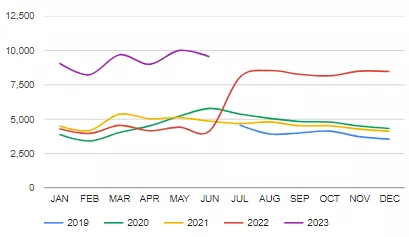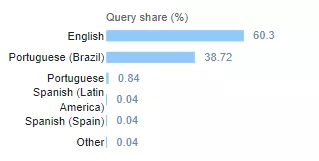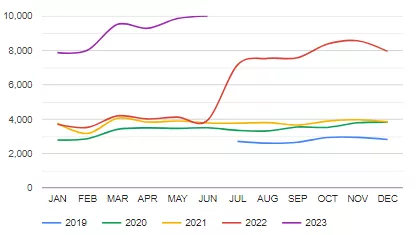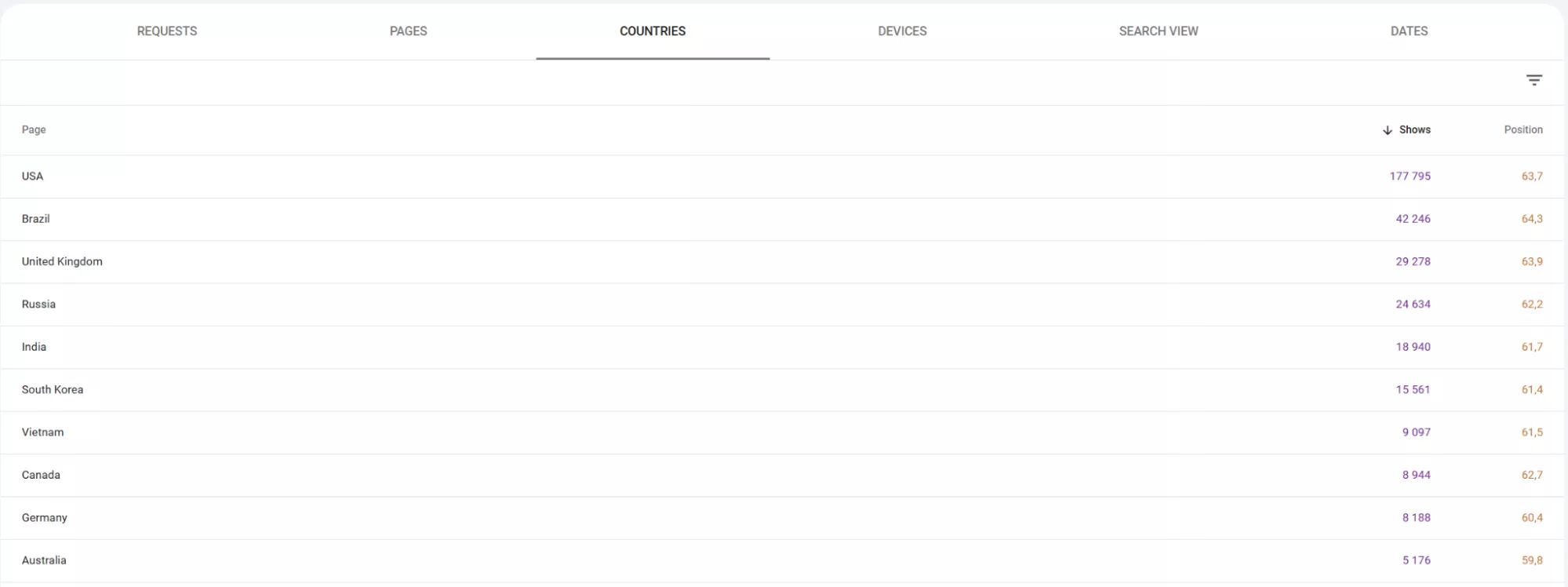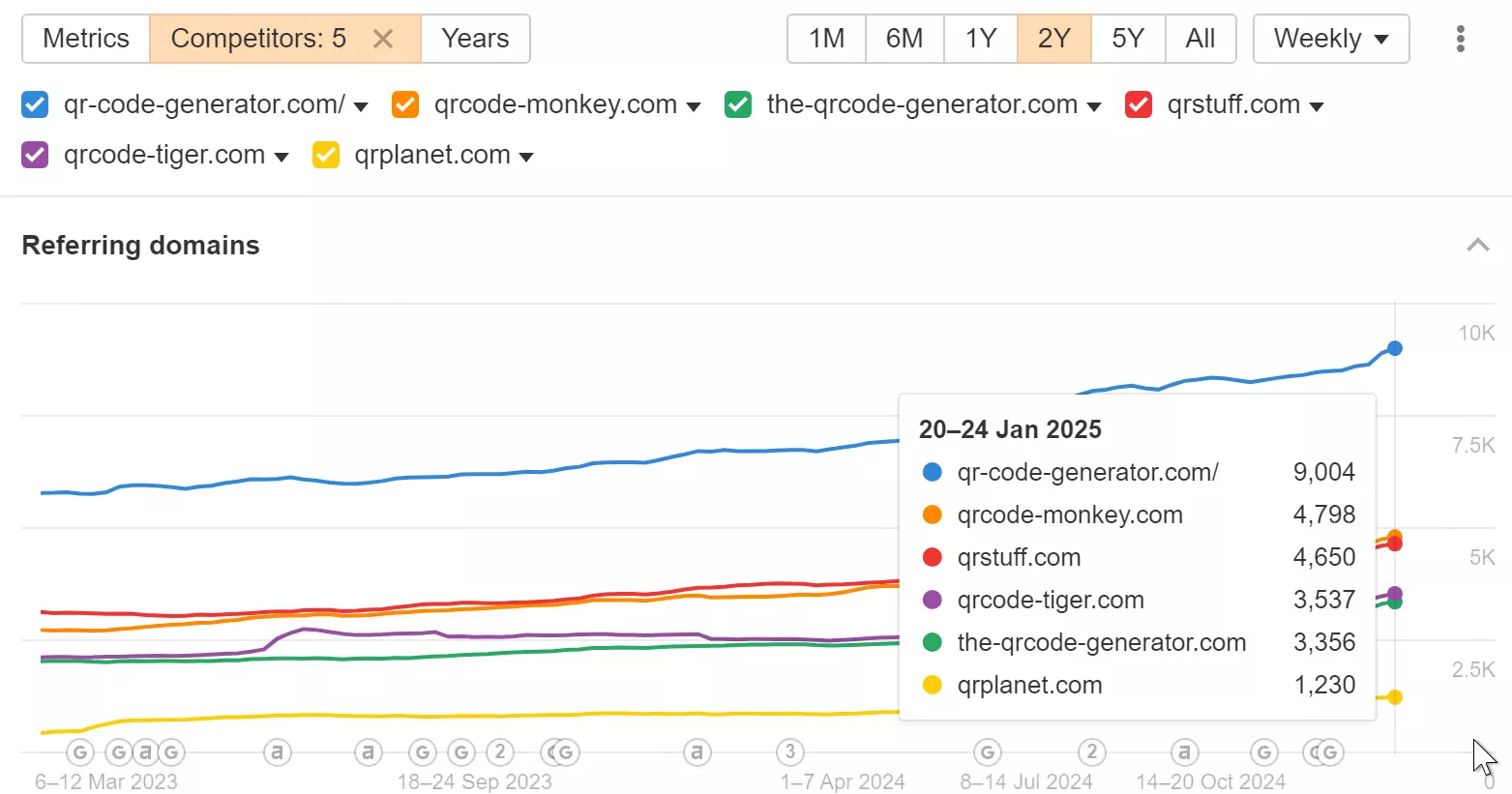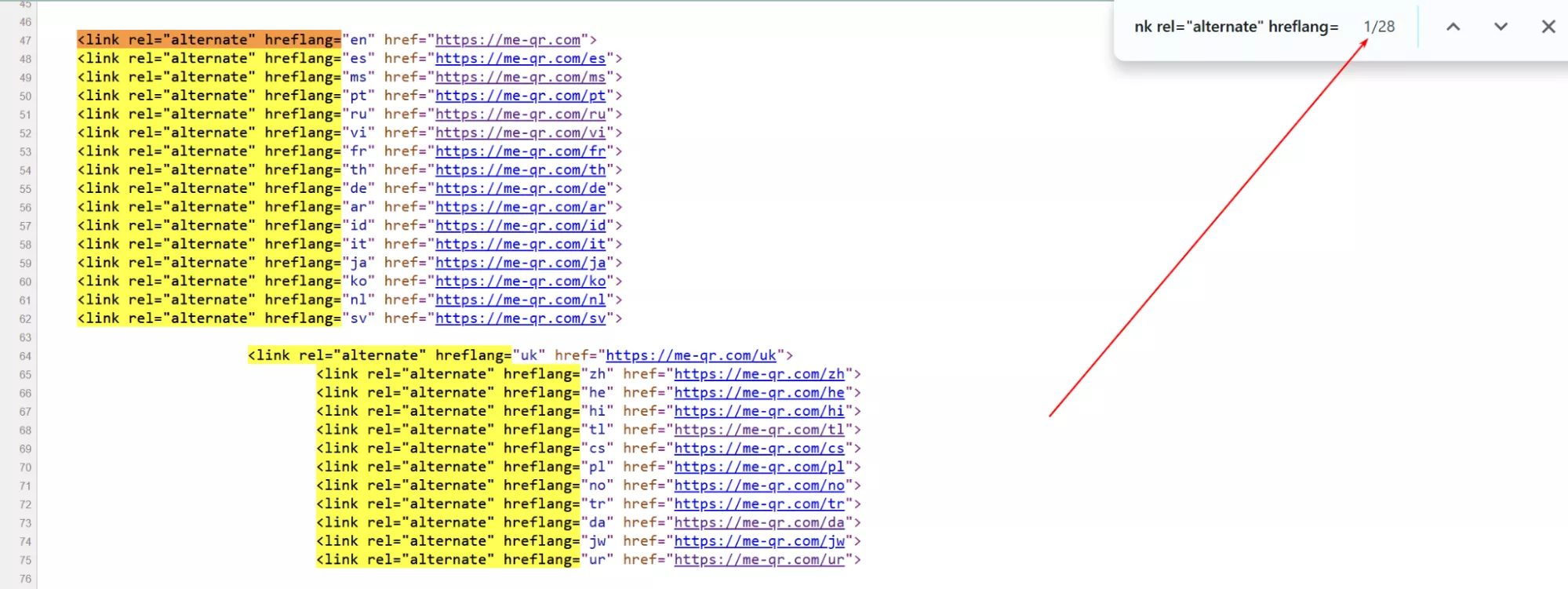Global SEO: Accelerate International Market Entry and Cut Costs
When you have a global audience, it's essential to reach them as effectively as possible. But how do you avoid stretching your budget too thin and getting lost in the world’s largest marketplace—the global market? Which countries should you target first? How do you become visible internationally?
Entering the global market requires not only translating the site and launching advertising in new countries but also implementing a clear SEO strategy. Without a proper strategy, it's easy to overspend the budget, target the wrong regions, or fail to rank in local search results.
In this article, I’ll tell you about Netpeak’s approach to international advertising. I’ll also share a tool we have developed internally, which contains scripts for automating heading and interlinking checks.
- What is global SEO?
- Entering the global market: where to start
- How to implement language versions
- Website localization
- Technical optimization
- Content optimization
- Scripts for fast, high-quality heading and internal link checks
- Product localization
- Building a backlink profile
What is global SEO?
International SEO, also known as global SEO, is a strategy for optimizing and promoting a website in search engines to effectively reach users across different countries.
It involves two main tactics:
- Internationalizing the site structure so that search engines can accurately identify which pages target users from different countries and language groups.
- Localizing content in a linguistically and culturally sensitive manner so that the keywords and search intent match the queries of your target audience.
Entering the global market: where to start
Study the market
The first step is to analyze the market. A market analysis will show if there is growing demand for a topic in each selected country. If the trends are positive, the next step is to identify the language users are using to search for information. This will help you determine if you should create a new language version for that region.
Let's take a look at a case study of how the Netpeak team helped one of our partners strengthen its position and boost organic traffic in the global market.
We started working on the project in April 2023. At that time, the site supported 16 language versions (now expanded to 28), with only seven countries having more than 1,000 organic sessions per month from priority pages. Our partner knew they wanted to scale as the product gained popularity worldwide, but there was no clear understanding of which countries to target or which new language versions to add.
For our analysis, we use Google Market Finder, a free tool designed to help businesses explore new international markets. It allows you to identify countries with high potential so you don't waste your budget on regions with low potential.
Country analysis for ME-QR. We analyzed high-potential countries that could generate high conversion rates. Given the tech-oriented nature of the product, we focused on North American and Asian markets, while European countries were already part of our expansion strategy.
At this stage, we selected suitable countries for global growth based on the cost per click (CPC) metric in Google AdSense and evaluated the year-over-year demand for the topic.
Here's what it looked like on a country-by-country basis.
Brazil:
Year-over-year demand for the topic
Most popular languages used in Google searches
South Korea:
Year-over-year demand for the topic
Most popular languages used in Google searches
What if you don't know which market to enter?
Among our clients, we worked with one partner who launched an English-language site without clearly defining their target markets. In the first few months after the launch, we collected data in analytics systems, including Google Search Console and Google Analytics.
Here’s what we analyzed:
- Views and positions for key queries in Google Search Console.
- User behavior metrics from different countries, such as time on site, pages per session, and conversions.
- Organic keyword visibility and search frequency.
The screenshot below shows how the site was already receiving impressions and ranking in various countries, even though the content was available only in English.
An example of impressions and average positions across different countries
After analyzing the results, we found that most impressions came from the United States, which was expected. However, Brazil, South Korea, and Vietnam, which are regions where English is not the primary language, also appeared in the top 10 countries. This indicated that the website has good potential in these locations.
These insights helped us identify the countries with the highest interest in the product and the most competitive keywords. Based on this, we developed localized versions of the website for these regions, with content and SEO strategies tailored to regional specifics. As a result, our partner successfully entered new markets and accelerated their global business growth.
Conduct a competitor analysis
A thorough competitor analysis has a direct impact on your strategy for entering a new market. It allows you to:
- Assess the level of competition.
- Identify the strengths and weaknesses of other players.
- Discover effective tactics.
If the market is oversaturated, you may need a narrower specialization or a unique selling proposition (USP) to stand out.
Competitor research can also help you adjust the SEO strategy and localization approach. At this stage, you can identify the most effective keywords for each region, the content formats preferred by local users, and the technical settings required for better site indexing.
As a result, you will minimize risks, optimize budget allocation, and build a strategy that delivers the highest return on investment.
When performing a competitor analysis, our agency's experts apply SEO methods that consider both business goals and the technical aspects of websites. The key focus areas include:
- Keywords
- Content localization
- Site structure (‘hreflang’ attribute, regional domains)
- Link profile
- Page load speed
- Pricing
- USP
- Customer testimonials
- Advertising campaigns
Example of referring domain dynamics for ME-QR.com competitors
For example, a more detailed analysis of the domain zones of the sites linking to competitors allows you to find out the countries in which they invest more budget for promotion. This allows you to identify their priority regions and evaluate their localization strategy.
Analyze key queries
This step is necessary to identify popular queries in target geographies, understand demand for the product or service, and select the most relevant keywords to drive promotion.
How Netpeak does it:
By researching the domains or pages of local competitors, we are able to identify the queries they rank for, along with their search volume and positions in search engine results pages (SERPs). After filtering queries by frequency, region, and length, we highlight both high-volume and niche keywords. Analyzing both overlapping and unique competitor queries allows us to identify gaps in a strategy and adapt it to the regional market’s specific needs.
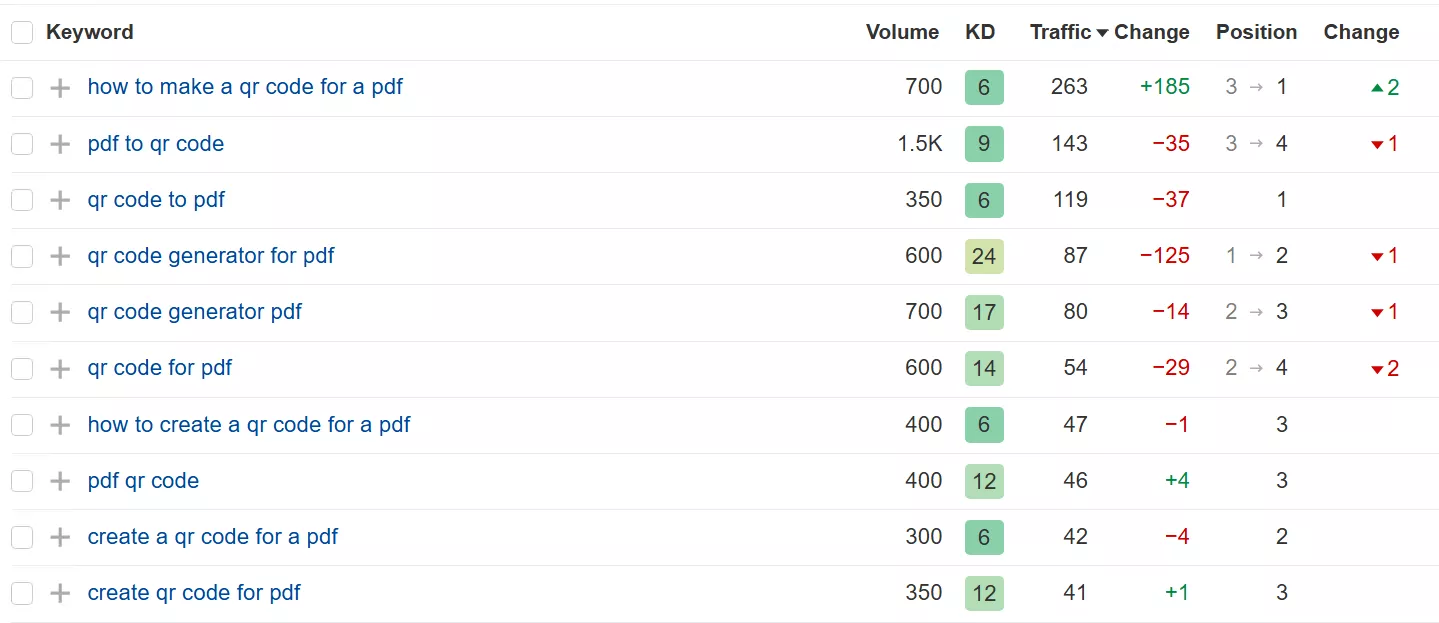
Example of key queries for the main competitor in the U.S. market in the 'QR code for PDF files' niche
The data in the screenshot shows that the search volume for this topic is quite high, as well as the rankings of our competitors. Additionally, using Ahrefs, you can quickly see the estimated traffic for each keyword.
How to implement language versions
Once you’ve identified the market you want to enter, the next step is to add a new language version to the site.
In this case, it is important to configure the site's architecture correctly. There are three ways to implement a language version:
- Separate domains
- Subdomains
- Directories (subfolders or subcategories)
Each option has its advantages and SEO-related challenges.
Separate domains
A separate-domain configuration involves using unique domain names for each localized version of the site, for example, example.com and example.fr.
While this approach can be highly effective for targeting one region, it makes it more challenging when expanding to additional markets. Search engines treat such domains as separate entities, even though they belong to the same brand. As a result, one domain may carry significantly more authority than another, leading to varied rankings across regions. Since each domain functions independently, promoting them requires substantial investment in SEO and marketing efforts.
Examples of sites that use separate domains.
Google:
- google.com (for an international audience)
- google.ua (for Ukraine)
- google.de (for Germany)
eBay:
- ebay.com (for an international audience)
- ebay.de (for Germany)
- ebay.co.uk (for the United Kingdom)
Subdomains
This site architecture uses separate subdomains for each localized version, for example, en.example.com or fr.example.com.
This approach allows you to separate the language versions while keeping the main domain intact. The main advantage is that subdomains can benefit from the authority of the primary domain, which can positively impact their search engine rankings. However, this configuration means that each subdomain will need a separate promotion.
Examples of sites using subdomains.
Reddit:
- www.reddit.com (main domain)
- en.reddit.com (for the English-speaking audience)
- de.reddit.com (for the German-speaking audience)
Wikipedia:
- en.wikipedia.org (English-language articles)
- uk.wikipedia.org (Ukrainian-language articles)
- de.wikipedia.org (German-language articles)
Directories (subfolders)
This is the most commonly used approach. It implements localization through the site’s URL structure, for example, example.com/en/ or example.com/fr/.
The main advantage of using directories is that all the authority of the main domain is distributed to the subfolders, making them easier to promote in search engines. This approach is less expensive to implement and maintain, but it requires careful setup to ensure proper content separation and indexing by search engines.
In highly competitive markets with many regional domains, promoting a site to the top can be more challenging.
Examples of sites using subfolders.
Mozilla:
- mozilla.org/en-US/ (English (US))
- mozilla.org/uk/ (Ukrainian)
- mozilla.org/de/ (German)
Spotify:
- spotify.com/us/ (English (US));
- spotify.com/de/ (German).
URL parameters
This method is an example of what not to do. When implemented incorrectly, it can result in a large number of duplicate pages, which will negatively impact the site's rankings and lower its position in search results.
Examples of parameter-based URLs:
- https://example.com/product?lang=en
- https://example.com/product?lang=fr
For detailed recommendations on managing multiregional and multilingual sites, see Google Help.
Website localization
Once the structure and SEO strategy are in place, it's time for a full website localization. This process involves four main components:
- Technical optimization
- Content optimization
- Product localization
- Building a backlink profile
Technical optimization
The technical optimization of pages for new locales is done based on the ‘hreflang’ tag. This attribute informs search engines which version of a page to display.
‘Hreflang’ is a special attribute that helps search engines understand which language and country the content is intended for.
To localize pages properly, each page must include ‘hreflang’ tags linking to all alternate language versions of that page.
If the homepage has 28 localized versions, the language switcher should include 28 links, one for each version. The same goes for the ‘hreflang’ tags:
Home page of the ME-QR website
Here, the article page is implemented in only 19 languages. Therefore, the code should include only 19 links, not 28 as on the homepage:
If some site locales are implemented on separate domains or subdomains, they must also be specified in the ‘hreflang’ tag. This links the different versions across domains and helps transfer authority between them. It also enables search engines to better understand the content when detecting alternative pages for other locales or domains.
Additionally, it's important to correctly implement a language switch button.
The language switch should only appear on pages that exist in all the supported languages. For instance, if a page is available in only three out of five languages, the switch should be shown only on those three versions.
Content optimization
Localizing a website into other languages is a key aspect of multilingual SEO. Proper localization increases the site's relevance to local search engines, improves click-through rates, and allows you to address the cultural characteristics of your target audience.
The localization process for a multilingual site requires striking a balance between preserving keywords and adapting the content to the language and culture of the target audience.
Important things to consider when localizing:
- Literal translation is often insufficient, as users search for information using different localized phrases or terms depending on the region.
- The approach to content creation should take into account cultural nuances, the target audience, and their language. For example, emotionally charged phrases, references to discounts, or special offers may have different effects depending on the region.
Netpeak's team of experts has developed a unique content optimization process that simplifies work with multilingual resources. In our experience, the key to effective content optimization includes:
- Customization and debugging of the proofreading and verification process.
- Automation of routine tasks, which we successfully implement using custom scripts.
- AI-powered text translation. AI translators outperform traditional ones in terms of speed, availability, and cost. They can process large volumes of text instantly, providing fast and convenient translation without delays.
Scripts for fast, high-quality heading and internal link checks
For large, multilingual sites, manual checks are not only labor-intensive but also prone to human error. To efficiently allocate resources and save budget on routine tasks, we implement automation based on Google Scripts or similar solutions. SEO specialists at Netpeak have created two scripts to quickly and efficiently check the correctness of subheadings and internal linking with proper anchors.
Product localization
Localizing a product for new markets requires adapting it to the specific needs of each country. Using the ME-QR product as an example, I will show you how our team tackled this.
Specifics of doing business in different markets
For a launch in Germany, it is essential to consider the country's strict privacy regulations and emphasize data security. In China, on the other hand, QR codes are widely used in everyday life, especially for payment and social functions, so integration with WeChat Pay or Alipay is a key feature.
Interface and content translation
In France, the UI translation takes into account the more formal communication style typical of business interactions. In Brazil, the translation focuses on enhancing the user experience, as the culture places a high value on emotional engagement with the content.
Key product features
For the U.S., we emphasized marketing and analytics features, as QR codes are widely used in advertising. In India, we added support for local payment systems, as QR codes are often used for micropayments.
SEO and metadata
In Japan, metadata and content must be adapted to a formal style and include keyword queries that are popular with local search engines, such as Yahoo! Japan. For Indonesia, it is crucial to consider the dominance of Google and the local use of QR codes. It is also important to include examples of QR code applications in restaurants, transportation, and educational initiatives.
Marketing and endorsements
In Italy, marketing materials need to evoke emotion and highlight both convenience and innovation. In South Korea, advertising should emphasize the high-tech nature of the product, as the market highly values advanced solutions.
Building a backlink profile
Compared to conventional sites, multilingual websites have unique characteristics for link building. The main focus is on localizing the links and ensuring that they are relevant to the target markets. Link Building Recommendations for Multilingual Sites
Local links are more important than global links.
External links should come from country-specific domains (e.g., .fr for France or .de for Germany). This increases the site's authority in the eyes of local search engines.
Unlike conventional websites, where the total volume of backlinks is most important, multilingual projects require a localized link profile, with the majority of referring domains coming from the target region.
Use of regional directories and media
In France, listing a site in regional business directories or local news portals can significantly increase its relevance. In Germany, partnering with B2B or technology blogs is particularly beneficial if the site is business-oriented.
Localized anchors
Anchor text for multilingual sites should be translated and adapted to the language of the target audience.
Localized partnerships
Partnering with local businesses and resources is especially beneficial for multilingual sites. Not only does this increase brand awareness, but it also enables the placement of quality external links that will enhance the website’s credibility in the region.
All of these steps were done as part of a project to increase global rankings and organic traffic for the ME-QR product. Once the tasks were done, the Netpeak team achieved the following results:
- Monthly traffic increased from 20 to 30 million sessions, with organic traffic increasing by 80%.
- On priority pages where users convert, there was a 320% increase in clicks and a 170% increase in impressions.
- Positions for purchased anchors in the core US region improved 77% of the time.
By adopting a focused approach to solving the partner's business challenges, we achieved significant traffic growth and improved rankings in international markets.
Conclusions
Website optimization for global markets is a strategic tool for businesses looking to scale and expand internationally. Without a clear SEO optimization strategy, it's easy to:
- Spend your budget but not see any of the expected results.
- Get lost among the competition without reaching the top of the search results.
- Fail to reach the right audience by choosing the wrong markets and language versions.
- Encounter technical issues that hinder indexing and promotion.
Here’s how the Netpeak team tackles these challenges:
- Identify priority markets by analyzing demand and competitive environment, and then focus only on promising countries.
- Develop an SEO strategy that takes into account local specifics, ensuring the creation of relevant content and proper technical configuration of the site.
- Automate routine processes to optimize the budget and minimize content adaptation errors.
- Adopt a targeted approach that eliminates inefficient spending and directs resources to priority markets where demand is highest.
- Monitor performance and adjust the strategy as the business grows to ensure that scaling is manageable and profitable.
Related Articles
Automatic Analysis of Customer Data (RFM Analysis) Using Google BigQuery
This article discusses how RFM analysis helps businesses identify their most valuable users, optimize their resources, retain existing customers, and attract new ones
Should I Keep My Blog on a Subdomain for SEO?
Discover whether the idea to keep a blog on a subdomain is worth a shot for your business. See the perks of having your blog on a subfolder based on our expertise.
What Is Amazon Brand Registry and How Does It Work?
In this article, I will explain the program's features, how to register your brand, and how to improve product promotion using the program. I will also present some successful case studies

